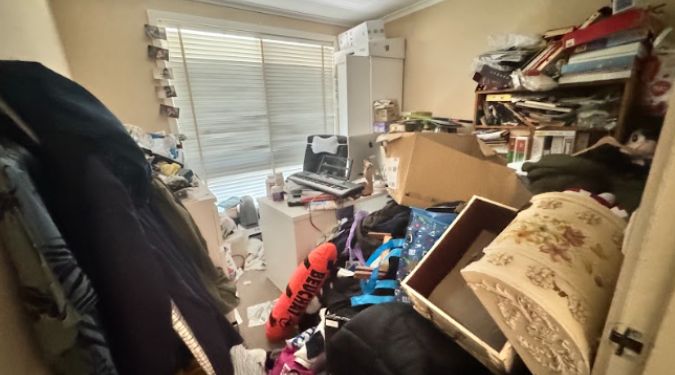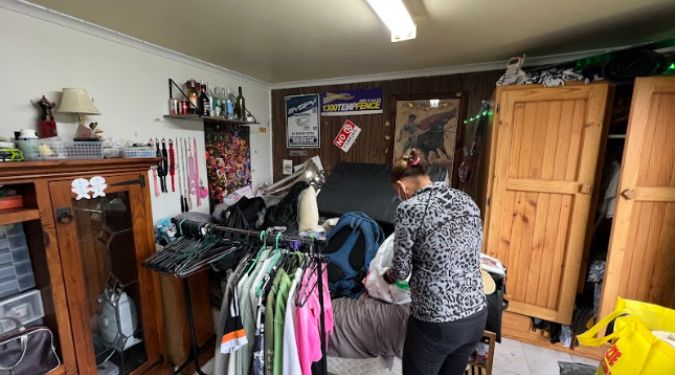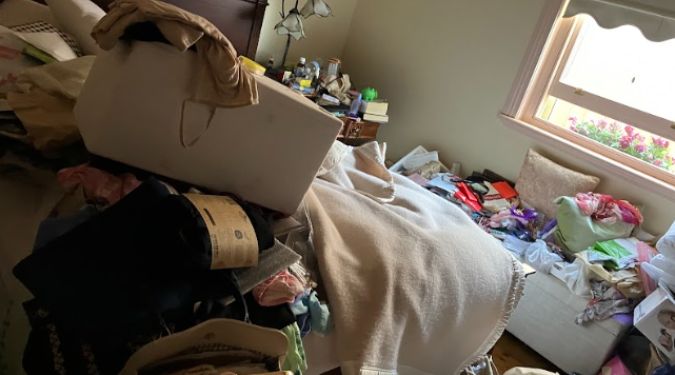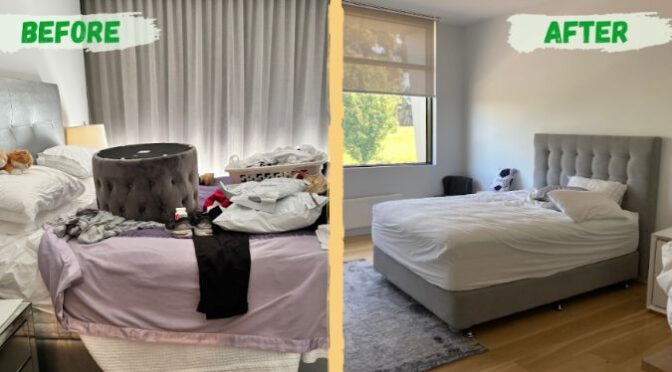Your bedroom should be your sanctuary—a place to relax, recharge, and escape the chaos of daily life. Unfortunately, for many people, their bedroom becomes a catch-all for clutter, turning it into a source of stress rather than tranquillity. Suppose you’re a home organiser looking to help your clients achieve a peaceful, clutter-free bedroom. In that case, this guide offers practical, actionable steps for creating a relaxing bedroom sanctuary and maintaining it long-term.
Why Decluttering Your Bedroom Matters
Clutter in the bedroom can impact mental health, sleep quality, and overall well-being. A clutter-free space promotes relaxation and creates a functional environment that supports your daily routines. With the help of a step-by-step bedroom decluttering guide, you can empower your clients to reclaim their personal space and enjoy a better quality of life. Whether you are working on decluttering tips for small bedrooms or larger spaces, this method applies universally.

Step-by-Step Guide to Decluttering a Bedroom
1. Set the Vision
Before diving into the decluttering process, defining what a “relaxing sanctuary” looks like is essential. Ask your clients:
- What do they want to feel when they enter the room?
- What items contribute to their comfort and peace?
- What’s currently detracting from the room’s atmosphere?
This vision will serve as a guide for simple bedroom decluttering strategies for busy people.
2. Start with a Clean Slate
Clear the room of all non-essential items. Have your clients temporarily remove items like laundry piles, stray books, and knick-knacks. This creates a blank canvas to identify what truly belongs in the space.
Pro Tip: Use this step to dust surfaces and vacuum floors. A clean room feels instantly more refreshing. For small bedrooms this step can also help with maximising space in small bedrooms with decluttering.
3. Address Furniture Placement
The arrangement of furniture can influence the flow of a room. Encourage your clients to:
- Position the bed as the focal point, ideally providing a clear line of sight to the door.
- Avoid overcrowding the space with unnecessary furniture.
- Leave enough space for movement to create an open, airy feel.
This step complements any bedroom organisation ideas for better sleep.
4. Declutter by Categories
Breaking down the decluttering process into manageable categories helps prevent overwhelm. Focus on one category at a time:
- Clothing: Help your clients evaluate their wardrobe. Use the “keep, donate, discard” method for sorting clothes, keeping only items they love and wear regularly. Store seasonal items separately with creative storage solutions for a clutter-free bedroom.
- Bedside Tables: These areas often accumulate random items. Encourage clients to keep only essentials like a lamp, book, or glass of water. Everything else should find a new home.
- Decor and Sentimental Items: While sentimental items are essential, too many can create visual clutter. Suggest displaying a few meaningful pieces while storing others in a keepsake box. This approach addresses how to let go of sentimental clutter in the bedroom.
- Electronics: Reduce technology in the bedroom to maintain a serene atmosphere. I suggest relocating items like TVs or work laptops to other areas of the home to create a relaxing bedroom sanctuary.

5. Maximise Storage Solutions
For a truly organised bedroom, storage is key. Introduce creative solutions to make the most of available space:
- Use under-bed storage bins for seasonal clothing or extra bedding.
- Invest in multi-functional furniture, such as ottomans with hidden storage.
- Install shelves or hooks to keep surfaces clear while adding storage, ensuring creative storage solutions for a clutter-free bedroom.
6. Create a System for Maintenance
Decluttering isn’t a one-time task—it requires ongoing effort. Establish systems to keep the bedroom clutter-free:
- Introduce daily habits like tidying up before bed.
- Consider regular decluttering sessions once a month.
- Provide simple storage solutions, like baskets for quick cleanups, as part of simple bedroom decluttering strategies for busy people.
Enhancing the Bedroom’s Atmosphere
Once the clutter is under control, add elements contributing to the room’s relaxing vibe. Here are a few tips:
1. Choose a Calming Color Palette
Soft, neutral tones like blues, greens, or greys promote relaxation. Incorporate these colours through wall paint, bedding, and decor. Explore calming bedroom colour palette ideas that inspire a serene atmosphere.
2. Optimise Lighting
Lighting plays a significant role in setting the mood. Suggest:
- Installing dimmer switches for adjustable brightness.
- Using warm, soft light bulbs for bedside lamps.
- Blackout curtains will be added to ensure a restful night’s sleep.
These ideas complement bedroom organisation ideas for better sleep.
3. Incorporate Nature
Plants can bring life and freshness to a bedroom. Low-maintenance options like snake plants or peace lilies improve air quality and enhance the room’s aesthetic.
4. Add Personal Touches
Encourage clients to include personal elements that bring them joy, such as framed photos, favourite artwork, or a cozy throw blanket. This allows for the personalisation of how to create a relaxing bedroom sanctuary.

Common Challenges and Solutions in Bedroom Decluttering
1. Sentimental Attachments
Clients often struggle to let go of items with emotional value. Address this by:
- Encouraging them to take photos of items for memories.
- Limiting sentimental displays to a small, dedicated space.
2. Lack of Storage
Small bedrooms can feel particularly challenging. Consider compact, multi-functional storage solutions like bed risers or wall-mounted organisers. This ensures clients are maximising space in small bedrooms with decluttering.
3. Overwhelm
Decluttering an entire room can feel daunting. Break the process into smaller tasks, such as decluttering one drawer or corner at a time. Decluttering tips for small bedrooms help reduce clutter in compact spaces.
The Benefits of a Clutter-Free Bedroom
A decluttered bedroom offers numerous advantages, including:
- Improved Sleep: A tidy space helps reduce stress and promote better rest. Use bedroom organisation ideas for better sleep to achieve this.
- Enhanced Focus: Clients can start and end their day with a clear mind without visual distractions.
- Aesthetic Appeal: A well-organised bedroom looks and feels more inviting.
Ready to transform your bedroom into a peaceful sanctuary? Call us at 03 8583 9103, email nancy@homeorganisers.com.au, or visit homeorganisers.com.au to get started today


